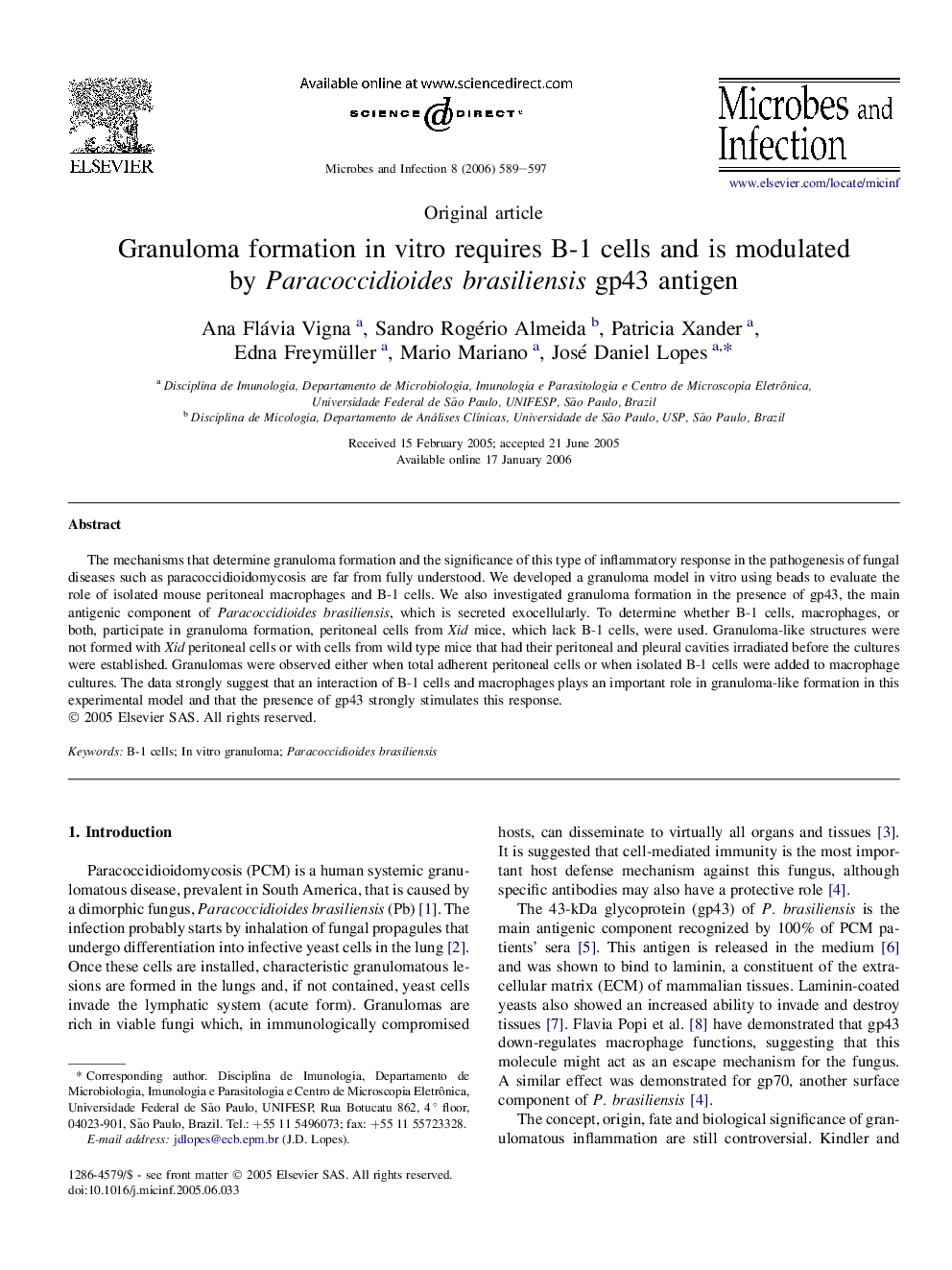| Article ID | Journal | Published Year | Pages | File Type |
|---|---|---|---|---|
| 3416150 | Microbes and Infection | 2006 | 9 Pages |
Abstract
The mechanisms that determine granuloma formation and the significance of this type of inflammatory response in the pathogenesis of fungal diseases such as paracoccidioidomycosis are far from fully understood. We developed a granuloma model in vitro using beads to evaluate the role of isolated mouse peritoneal macrophages and B-1 cells. We also investigated granuloma formation in the presence of gp43, the main antigenic component of Paracoccidioides brasiliensis, which is secreted exocellularly. To determine whether B-1 cells, macrophages, or both, participate in granuloma formation, peritoneal cells from Xid mice, which lack B-1 cells, were used. Granuloma-like structures were not formed with Xid peritoneal cells or with cells from wild type mice that had their peritoneal and pleural cavities irradiated before the cultures were established. Granulomas were observed either when total adherent peritoneal cells or when isolated B-1 cells were added to macrophage cultures. The data strongly suggest that an interaction of B-1 cells and macrophages plays an important role in granuloma-like formation in this experimental model and that the presence of gp43 strongly stimulates this response.
Related Topics
Life Sciences
Immunology and Microbiology
Immunology
Authors
Ana Flávia Vigna, Sandro Rogério Almeida, Patricia Xander, Edna Freymüller, Mario Mariano, José Daniel Lopes,
